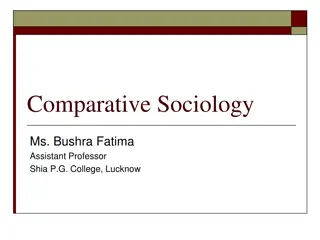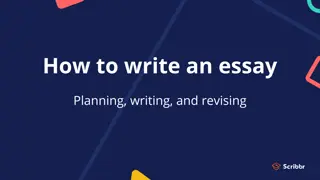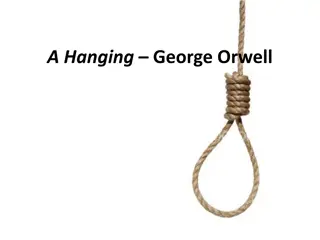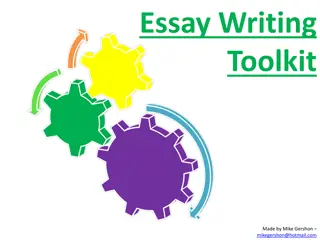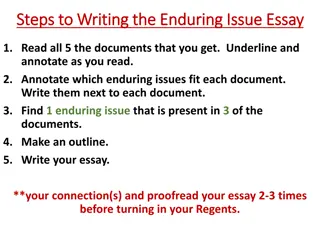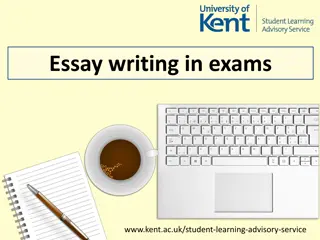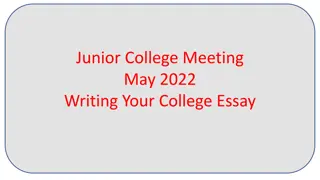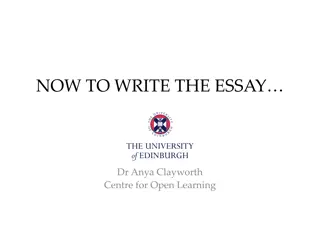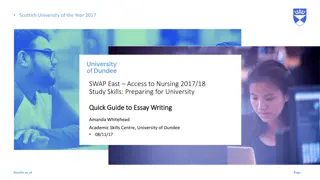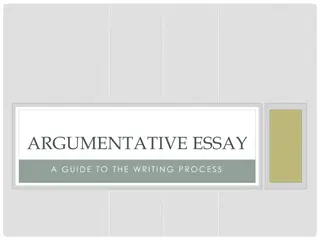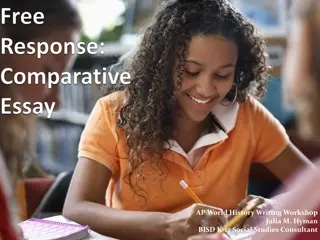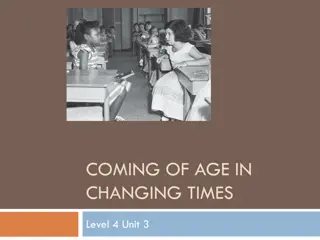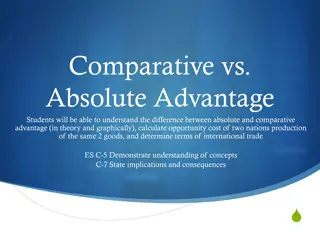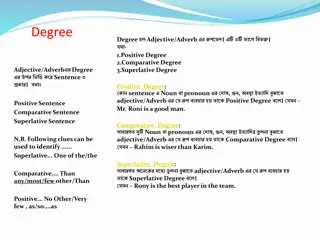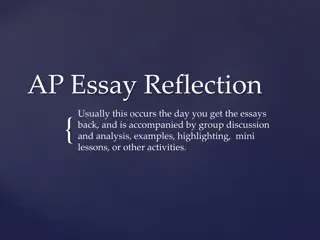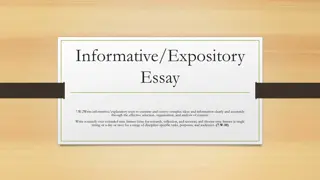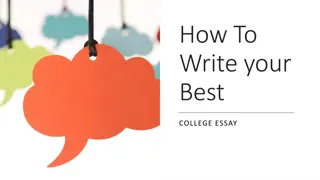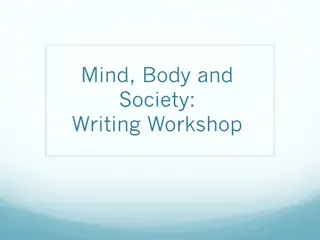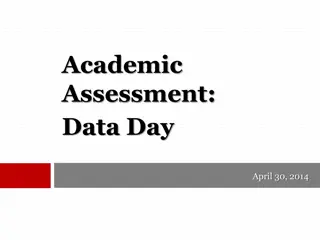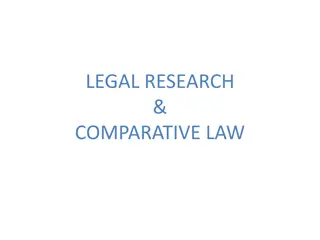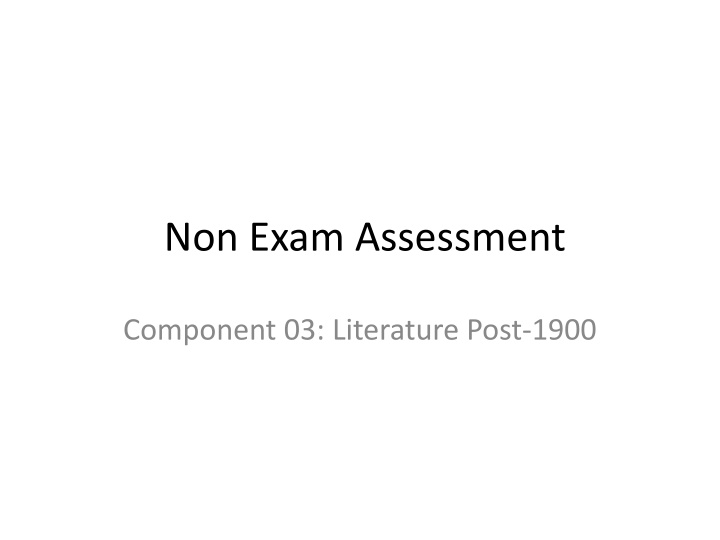
Exploring Modern Literature: Comparative Analysis of The History Boys and Notes on a Scandal
Dive into the study of Literature Post-1900 with a focus on The History Boys by Alan Bennett and Notes On a Scandal by Zoe Heller. This component emphasizes individual analysis, interpretation, and understanding of texts, culminating in a comparative essay exploring contrasting elements in the two literary works. Unveil the themes of growing up, vulnerability, and intergenerational relationships portrayed in these modern classics.
Download Presentation

Please find below an Image/Link to download the presentation.
The content on the website is provided AS IS for your information and personal use only. It may not be sold, licensed, or shared on other websites without obtaining consent from the author. If you encounter any issues during the download, it is possible that the publisher has removed the file from their server.
You are allowed to download the files provided on this website for personal or commercial use, subject to the condition that they are used lawfully. All files are the property of their respective owners.
The content on the website is provided AS IS for your information and personal use only. It may not be sold, licensed, or shared on other websites without obtaining consent from the author.
E N D
Presentation Transcript
Non Exam Assessment Component 03: Literature Post-1900
Component 03: Literature Post-1900 The aim of this component is to encourage individual study and enjoyment of modern literature and for students to develop: an appreciation of how writers shape meanings in texts through use of language, imagery, form and structure an understanding of texts informed by an appreciation of different interpretations an ability to explore connections across texts, such as stylistic, thematic or contextual an understanding of the significance and influence of contexts in which texts were written and received.
Literary text requirements Candidates are required to study three literary texts. The three texts must include one prose text, one poetry text and one drama text: the texts must have been first published or performed in 1900 or later one literary text must have been first published or performed after 2000.
Task 2: Comparative Essay Candidates submit an essay considering two texts exploring contrasts and comparisons between them, informed by different interpretations and an understanding of contexts. What do we mean by different interpretations ? reference to recognised critics different theatrical interpretations of drama where candidates discuss different directors presentations or different actors portrayals exploring a text in relation to, for example, Aristotelian or other concepts of tragedy developing a theoretical approach to the study of their texts (feminism or Marxism, for example) different interpretations of texts produced through rewriting or television/film adaptations.
Texts This task must be based on two literary texts. The History Boys by Alan Bennett Notes On a Scandal by Zoe Heller Published 2003 Published 2004
Possible task titles: Compare and contrast ways in which Bennett and Heller present responses to social background in The History Boys and Notes on a Scandal. Growing up, these texts confirm, is hard to do. By comparing the treatment of growing up in The History Boys and Notes on a Scandal, say how far and in what ways these texts lead you to agree with this view. Compare ways in which Bennett and Heller present the young protagonists of The History Boys and Notes on a Scandal as vulnerable characters who are exploited by the older generation. Compare and contrast ways in which Bennett and Heller explore the relationships between teachers and young people in The History Boys and Notes on a Scandal.
Assessment Criteria Task 2: Comparative Essay (25 marks) Candidates are required to produce an essay exploring connections and comparisons across texts. Candidates are assessed on: AO1: Articulate informed, personal and creative responses to literary texts, using associated concepts and terminology, and coherent, accurate written expression AO2: Analyse ways in which meanings are shaped in literary texts AO3: Demonstrate understanding of the significance and influence of the contexts in which literary texts are written and received AO4: Explore connections across literary texts AO5: Explore literary texts informed by different interpretations. In Task 2 all five assessment objectives are equally weighted at 20%
Regulations The suggested length of work in a folder is 3000 words (task 1 approx 1000, task 2 approx 2000. A learner will not be specifically penalised for exceeding the suggested word length, however any response that significantly differs from this word count is likely to be self-penalising either by not demonstrating the AOs to the required level, or through lacking coherence and concision. Quotations If quotations from secondary sources are used, they must be acknowledged by use of footnotes (quotations and footnotes do not form part of the word count). Bibliography All work must be accompanied by a complete bibliography. This must include, for books and periodicals, page numbers, publishers and dates, and for newspaper or magazine articles, titles, dates and sources (where known). Video and audio resources used must also be stated. For material taken from Internet sources, the full address is required. So that teachers can authenticate candidates work with confidence, teachers are required to obtain a copy of all Internet materials used. If, for any reason, a candidate has used no additional resource material, a statement to this effect must be included. (The bibliography does not form part of the word count.)
Deadlines Read Notes on A Scandal 6th June Pick your question and provide a brief initial outline of your response (main points) 13th June Period of reading and research in relation to question, plus class discussions/presentations/collaboration Create and submit a detailed plan for tutorial feedback 7th July Submit first draft for tutorial feedback 7th September Edit and redraft Submit final essay 10th October
Common themes Loneliness Sexuality Morality The abuse of power Manipulation Social class Scandal and reputation Perception vs reality Obsession Paedophilia Growing up
Other points of comparison Setting comprehensive school/grammar school Narrative structure flash forwards Narrative perspective unreliable narrator (NOAS) Character comparisons: Hector/Sheba, Steven/Dakin, the two Headmasters, Barbara/Lintott Literary criticism and significance Context education in 1980s/90s The role of teachers
NOAS an overview Set in 1996 at St. George s, a London comprehensive school, the novel revolves around a young teacher, Sheba Hart, her fifteen-year-old student Steven Connolly, and Barbara Covett, an older history teacher. The story is told in a first-person narrative, by the character Barbara, in a manuscript style with a confidential tone, much like a diary. Barbara appoints herself as Sheba s caretaker from the start, but the reader soon realizes that she is obsessed with Sheba and, therefore, is an unreliable narrator. The scandal in the novel is the affair Sheba has with Steven, her young student. However, while the surface level of the novel is dedicated to exploring the sexual affair, underlying that is the relationship between Barbara and Sheba. At the end, the reader may ask himself or herself, which relationship was more scandalous the relationship between Sheba and Steven or the one between Barbara and Sheba? This novel is more than a cautionary tale against illicit relationships; it is an in-depth exploration of the devastating force of obsession.
Significance of NOAS Notes on a Scandal propelled Zoe Heller into the top leagues of British literature and was shortlisted for the 2003 Man Booker Prize. According to American novelist Edmund White, Heller s status is equal to Martin Amis and Ian McEwan. She is most praised for her use of the first-person unreliable narrator; and her work has even been compared to John Fowles in The Collector and William Trevor in Felicia s Journey. Recently, Heller published her third novel, The Believers (2008), which has been shortlisted for the Jewish Quarterly-Wingate Literary Prize for Fiction (2009). Before Zoe Heller became a novelist, she wrote confessional fiction in the Sunday Times for four years. She now writes for the Daily Telegraph and was named Columnist for the Year in 2002. In 2006, Notes on a Scandal was made into a feature film starring Judi Dench and Cate Blanchett.
Wider reading/context Death in Venice Thomas Mann Lolita Vladimir Nabokov The Children Act - Ian McEwan The Pride of Miss Jean Brodie Murial Spark
Discussion questions 1. There has traditionally been a taboo on older women/younger men relationships. In the novel, the news media describes the affair between Sheba and Connolly as despicable and unhealthy . Why do you think it has historically been viewed this way? Do you agree? 2. Heller expertly captures the insulating and sometimes claustrophobic atmosphere of academia. Give examples of this, and discuss the differences and similarities between Sheba and Barbara that brought them to teach at the same institution. 3. Connolly s unabashed admiration and innocence prove irresistible to Sheba. How are Connolly s attentions much different from the oglings of her academic colleagues since both indicate that they find her sexually attractive? Why is one so much more flattering? 4. What makes a woman like Sheba behave so irresponsibly? How easy was it for her to risk everything for the danger of the relationship? Does Sheba really think about the consequences of her actions? 5. Why does Sheba s friendship with Sue Hodges seem so ill-founded to Barbara? Why would Sheba choose Sue as her confidant? She never mentions Connolly s visits to Sue. How does Barbara seduce Sheba away from Sue?
Discussion Questions 6. Barbara observes that Connolly s overt effort to please Sheba is like the cynicism of all courtship. Discuss what she means by this. 7. Barbara asks why Sheba insists on seeing Connolly as gifted and extraordinary in a sea of fairly ordinary, untalented students. Does the element of class exacerbate the forbidden nature of the relationship? Is Connolly exploiting this? What is his culpability in the situation? 8. Why, when Barbara seems like such a prim and formal person, is she initially so sympathetic to Sheba s predicament? Why is she not appalled? She says she thinks that Connolly is actually benefiting from the relationship, not being abused by it. Is it her desire for Sheba s friendship or pure feminist support? Does she take vicarious pleasure in it? 9. What is Barbara s reaction when she finally finds out about the affair? Is this the cause of her betrayal? Does it lead to her punishment at St. George s? Does Barbara have the right to set down the events in writing? Discus show their friendship provides as fertile ground for mutual misunderstanding, jealousy, and treachery as does the illicit love affair. 10. The story is finally about the two women, and the many facets of female friendship. Discuss the ways in which Heller s device of having Barbara tell the story serves to enrich the novel by revealing both women s emotional lives.

